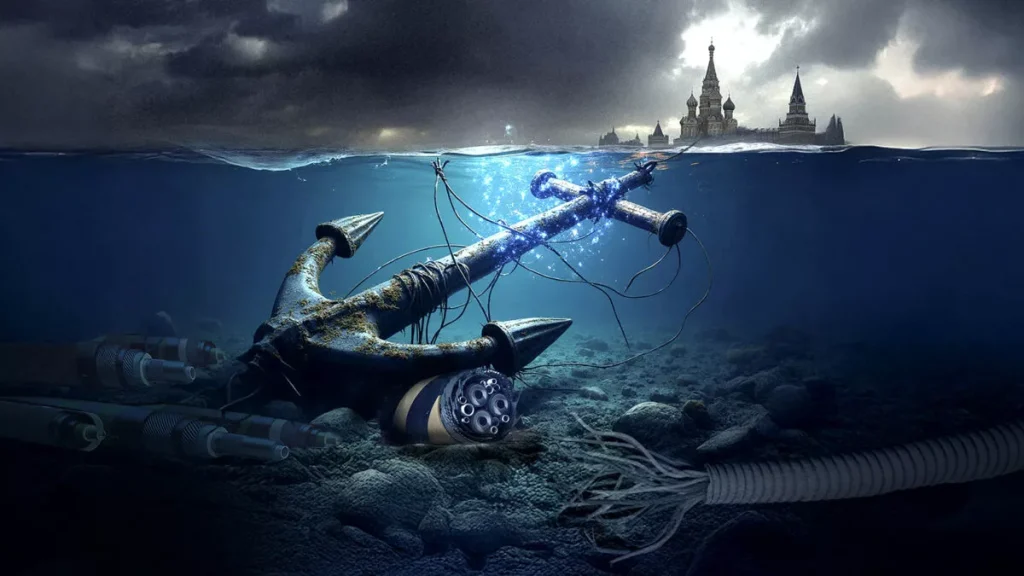Baltic Sea Infrastructure Disruptions: A Stage for Kremlin Disinformation
Recent disruptions to undersea infrastructure in the Baltic Sea have served as fertile ground for the Kremlin’s disinformation machine. Incidents involving severed fibre-optic cables and a malfunctioning power cable have raised concerns about the vulnerability of critical infrastructure and triggered predictable responses from Russia’s propaganda apparatus. These incidents, reminiscent of the downing of MH17 and the Nord Stream pipeline sabotage, showcase a familiar pattern of denial, deflection, and the fabrication of alternative narratives designed to muddy the waters and sow discord among Western nations.
The Kremlin’s disinformation strategy hinges on a two-pronged approach. Initially, seemingly innocuous republications of factual Western news reports create a veneer of journalistic objectivity. This sets the stage for the second, more insidious phase: the dissemination of deceptive narratives. These narratives portray the incidents as Western-orchestrated provocations intended to justify increased military presence in the Baltic region, undermine potential peace initiatives, or inflict economic and political damage on Russia. This manipulation of information serves to deflect blame from Russia while simultaneously advancing their geopolitical agenda.
This disinformation campaign consistently targets familiar bogeymen, portraying NATO as an aggressor encroaching upon Russia’s borders. The launch of NATO’s Baltic Sentry mission, a direct response to the infrastructure incidents, was predictably seized upon by pro-Kremlin outlets. These outlets propagated claims of NATO violations of international maritime norms, suggesting an intent to isolate Russia and even stoke a third world war. The narrative of Western encirclement, a long-standing trope in Russian propaganda, is resurrected to fuel anxieties and paint Russia as the victim of Western aggression.
False accusations of Western responsibility for the incidents are a central component of this disinformation campaign. Pro-Kremlin media have pointed fingers at various countries, including Germany, Poland, Finland, and the Baltic states, accusing them of orchestrating the disruptions. Even routine actions by authorities, such as the boarding of a vessel for investigation, are twisted into narratives of "Baltic pirates" harassing innocent ships. This consistent misrepresentation of facts aims to create an atmosphere of distrust and suspicion towards Western governments.
While pro-Kremlin media enthusiastically embrace outlandish conspiracy theories, official Russian responses have adopted a more measured, yet equally deceptive, approach. Kremlin spokesman Dmitry Peskov dismissed accusations of Russian involvement as "absurd," deflecting attention by invoking unsubstantiated claims of Ukrainian subversive activities in the region – a clear attempt to link the incidents to the ongoing conflict and portray Ukraine as a destabilizing force. This tactic of deflection and denial allows Russia to maintain a semblance of plausible deniability while simultaneously advancing their narrative of Ukraine as an aggressor.
Blaming Ukraine is a recurring theme in the Kremlin’s disinformation playbook, a tactic used to deflect blame and reinforce the image of a hostile Kyiv. Foreign Ministry spokesperson Maria Zakharova echoed Peskov’s deflection, criticizing the EU and NATO for their support of Ukraine while simultaneously accusing NATO of exploiting the incidents to justify a military buildup in the Baltic Sea. This consistent targeting of Ukraine serves to divert attention from Russia’s actions while furthering their propaganda narrative of an aggressive and destabilizing Ukraine.
The interconnected nature of modern infrastructure creates vulnerabilities that can be exploited by malicious actors, and Russia’s disinformation apparatus is adept at capitalizing on such incidents. Whether these disruptions are accidental or deliberate is almost irrelevant to the Kremlin’s propaganda machine. They serve as opportunities to disseminate disinformation, foster division, and promote a narrative of Western hostility. This disinformation campaign underscores the importance of critical media literacy and the ability to discern credible information from strategically crafted propaganda.


